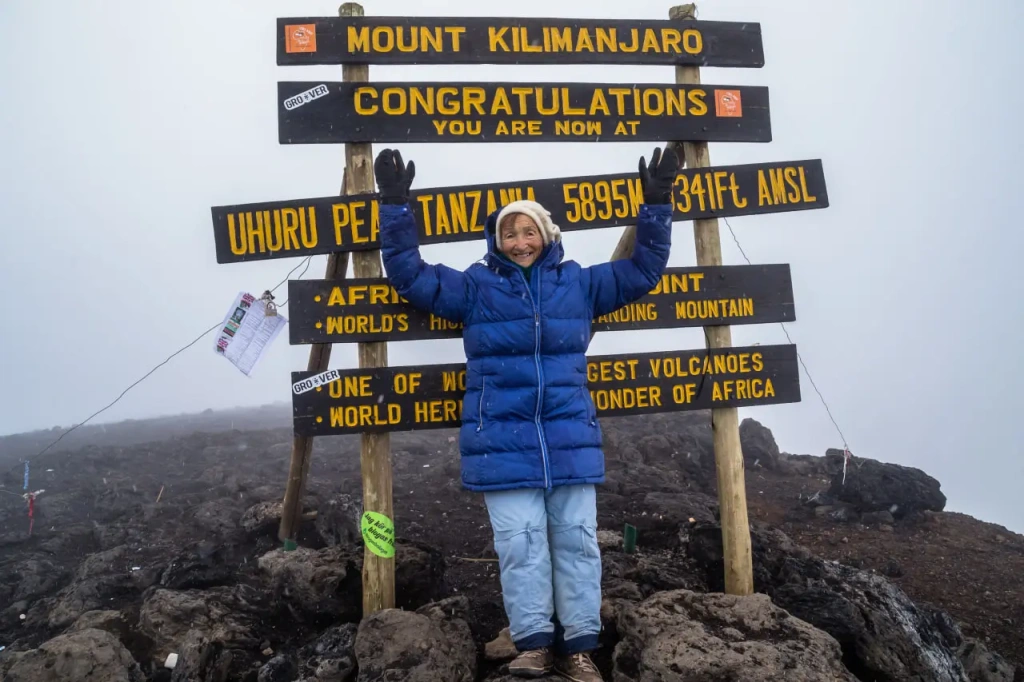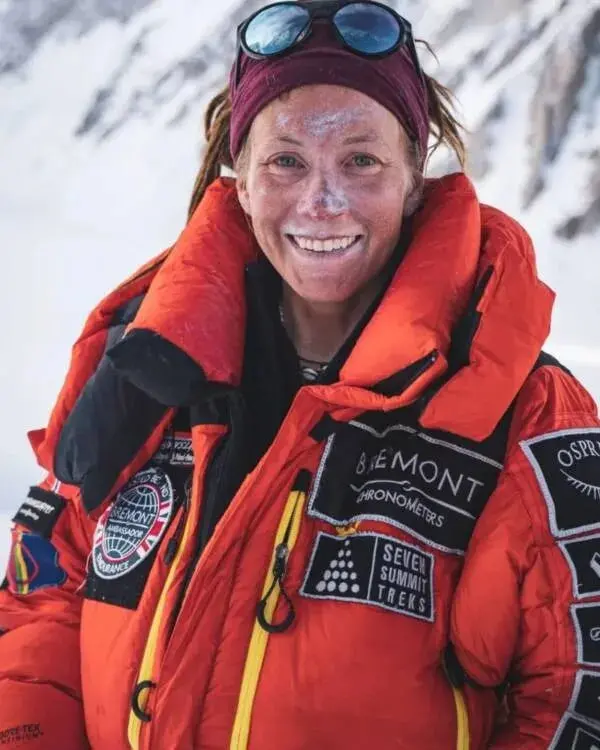In this article, we answer essential questions about climbing the Seven Summits – the highest mountains on each of the seven continents. We explore what the Seven Summits are, the difficulty of climbing each, and identify the easiest summit to tackle. Alongside insights on these towering peaks, we provide additional information that climbers and enthusiasts might find useful, such as interesting facts about the history of the Seven Summits, their names, associated world records, and more. This guide offers a clear and informative overview of the Seven Summits list and each of the highest peaks of the Earth's continents.
What are the Seven Summits?
The Seven Summits are the highest mountains on each of the seven continents. They are not the highest mountains on the planet, however, as that distinction belongs to the 14 eight-thousanders of the Himalayas.
What is the Seven Summits Club?
The Seven Summits Club, more than just a mountaineering club, represents an unofficial community of individuals united by a shared passion: conquering the highest peaks on each continent.
For members of the Seven Summits Club, climbing these peaks is more than just a physical challenge; it's an opportunity for personal growth and cultural exploration. The experiences shared among climbers foster strong friendships and a sense of camaraderie.
Kilimanjaro, with its accessible routes and scenic beauty, serves as the perfect gateway to this extraordinary world. It is often the starting point for many in the club, offering a glimpse into the adventure and fulfillment that come with these climbing endeavors.
What are the seven peaks of the world?
Here are all Seven Summits in order of decreasing height:
⛰ Mount Everest (8,848 meters / 29,032 feet) - The highest mountain in Asia and the world. Located on the border of Nepal and Tibet. Climbing time: 56 days. Cost: $59,000.
⛰ Aconcagua (6,962 meters / 22,837 feet) - The highest mountain in South America. Located in Argentina. Climbing time: 21 days. Cost: $7,000.
⛰ Denali (6,190 meters / 20,310 feet) - The highest mountain in North America. Located in the state of Alaska. It is formerly known as Mount McKinley. Climbing time: 24 days. Cost: $9,000.
⛰ Kilimanjaro (5,895 meters / 19,341 feet) - The highest mountain in Africa. Located in Tanzania. Climbing time: 8 days. Cost: $2,500.
⛰ Mount Elbrus (5,642 meters / 18,510 feet) - The highest mountain in Europe. Located in Russia. Climbing time: 10 days. Cost: $2,000.
⛰ Mount Vinson (4,892 meters / 16,050 feet) - The highest mountain in Antarctica. Climbing time: 18 days. Cost: $47,000.
⛰ Carstensz Pyramid/Puncak Jaya (4,884 meters / 16,024 feet) - The highest mountain in Australia and Oceania. Located in Indonesia on the island of New Guinea. Climbing time: 15 days. Cost: $17,000.
⛰ Mount Kosciuszko (2,228 meters / 7,310 feet) - The highest mountain in Australia. Climbing time: 1 day. Cost: $250.
Wait, why are there eighth summits?
The fact is, there isn't just one Seven Summits list. The confusion happens because there are continents and parts of the world, and those are different concepts. Not even all scientists can agree on whether to consider North and South America as one continent or two. At some point, the mountaineering community agreed that the list should include Europe and Asia (instead of Eurasia), as well as South and North America separately. But problems arose with Australia and Oceania. If you include only Australia, then its highest point is Mount Kosciuszko. And if you combine Australia and Oceania into one part of the world, then its highest point becomes the Carstensz Pyramid on the island of New Guinea. Not everyone agrees with this, and that's why there are two lists. In the Bass list, the seventh peak is Mount Kosciuszko, and in the Messner list, Carstensz Pyramid.
So, what are the true 7 Summits?
Both Bass and Messner lists mentioned above are valid. This is simply because they are, in principle, informal. There will always be someone who will argue about the seventh peak. So, some climbers eventually climb all eight summits - to be on the safe side. By the way, there is also a version that includes Mont Blanc. The fact is that in some versions of the geopolitical division, the Caucasus Mountains are considered to be part of Asia, not Europe. In that case, Mount Elbrus falls out of the list, and in its place comes Mont Blanc.
Why do people strive to climb the highest mountain on seven continents?
Simply because it is one of the most popular and well-known achievements in the world of amateur mountaineering. This is a way to test yourself, to do something on the edge of the possible, and, of course, to visit new places and see breathtaking landscapes.
How many people have finished the 7 Summits?
About 500 people have completed the Seven Summits list. However, there is no official organization named the Seven Summits Club, nor is there a single registry of all climbers. One of the most complete lists can be seen here. The project was abandoned in 2016, and at that time there were 416 people on the list, 71 of whom were women.
Who came up with the idea of conquering the highest peaks on each continent?
In 1956, American William Hackett climbed Mont Blanc. Before that, he had been to Denali (1947), Aconcagua (1949), Kilimanjaro (1950), and Kosciuszko (1956). That's five continents. He attempted to climb Mount Vinson and also received permission to climb Everest in 1960. However, the first was unsuccessful due to frostbite, and the second due to lack of funds. Hackett's idea quickly became popular, and several climbers ascended five or six peaks. But the first person to climb the Seven Summits was American Richard Bass. In just 1983, he climbed six peaks: Aconcagua, Denali, Kilimanjaro, Elbrus, Vinson, and Kosciuszko. In 1985, he climbed Mount Everest, completing the list.
How difficult is it to climb all seven summits?
Climbing all seven peaks mostly involves high-altitude trekking rather than technical mountaineering. Even ascending Everest, the greatest challenge comes from the altitude. The main difficulty in conquering the Seven Summits lies in the time and financial costs: expenses for flights, permits, visas, equipment, insurance, and much more. Climbing Everest, for example, takes up to two months and costs $60,000–$75,000. Not everyone has the means or the time to undertake such an endeavor.
Climbing big mountains like Everest, Denali, and Vinson carries inherent risks due to the extreme altitude. On the other hand, lower peaks of the Seven Summits, like Kilimanjaro, are generally considered quite safe even for beginners.
Seven Summits Records
Who were the youngest and the oldest climbers?
In December 2011, Jordan Romero (USA) climbed Mount Vinson, his last peak of the Seven, at the age of 15 years, 5 months, and 12 days. He was also the youngest person to climb Everest—at 13 years and 10 months.
Werner Berger (South Africa/Canada) climbed Everest at 69 years, 310 days on May 22, 2007, thus completing the Kosciuszko list. In 2013, at the age of 76 years and 128 days, he also climbed Carstensz Pyramid, completing both Seven Summits lists.
Who was the first woman to join the Seven Summits Club?
Japanese mountaineer Junko Tabei in 1992 reached the summit of the Carstensz Pyramid, completing her series of conquests that began in 1980 with Kilimanjaro.
Who did it the fastest?
Australian Steve Plain ascended Everest on May 14, 2018, finishing the entire seven climbs in just 117 days, 6 hours, and 50 minutes. He did this only 11 months after a serious injury.
Popular Questions about Seven Summits
Which of the Seven Summits is the easiest?
The easiest of the 7 Summits is Mount Kilimanjaro. Despite the relatively high altitude, it is not technically challenging. Additionally, the developed infrastructure allows you to climb Kilimanjaro without significant logistical expenses. A typical expedition lasts about a week. On the mountain, you'll enjoy meals from mountain chefs while the local guides and porters will take care of your gear and tents!
Which of the Seven Summits is the hardest?
Mount Everest is by far the hardest of the Seven Summits. With extreme altitude, extensive preparation, high expenses, and a short climbing season, making a successful ascent of the highest summit in the world is no trivial challenge.
In what order should you climb the Seven Summits?
The easiest start is Kilimanjaro: it requires no special mountaineering skills and is incredibly scenic. Moreover, Tanzania is a fascinating country in Africa, and the trip can be combined with an African safari and other activities. Next, Elbrus is recommended, followed by Aconcagua. This is a serious test before the main challenge—Everest. Vinson Massif, Denali, and Carstensz Pyramid can be tackled in any order, depending on visa and travel arrangements—though all will be costly, albeit much less so than climbing Mount Everest. Denali is also the most technically challenging, so it's better to attempt it when you feel like an experienced climber.
How fit do you need to be to climb the Seven Summits?
Good physical condition is essential, though there are no specific standards. No doctor will certify you as "fit for climbing Everest". However, extensive training—climbs at various altitudes and in different conditions—is necessary.
Can you climb the 7 Summits on your own?
Not all Seven. For instance, climbing Kilimanjaro without a local guide and support staff is not allowed. This restriction makes sense, as it's an important source of income for the local budget. Climbing Everest independently is also extremely difficult; you need a permit from the Nepalese government. They are scarce (only 500 were issued in 2023) and expensive—$11,000. Ascending Vinson Massif can only be organized by the American firm Antarctic Logistics & Expeditions LLC.
How to prepare for climbing the Seven Summits?
It depends on your climbing experience and physical condition. If you're in average or poor shape, start with general physical preparation—running cross-country, swimming, etc. Then move on to climbing. If you're in excellent shape, you could head to the mountains tomorrow. There are two approaches to high-altitude climbing. You can start training at a mountaineering club—available in many cities. There, you'll climb nearby peaks and get experience. Alternatively, you could go straight to commercial expeditions and, for example, climb Kilimanjaro.
How much will climbing all the Seven Summits cost?
The cost depends on how you organize everything. You can buy all-inclusive tours, or arrange some parts yourself. The most economical option will likely cost no less than $120,000. Everest is, of course, the most expensive, with costs ranging from $36,000 to as much as $200,000.
If you're not up for complex logistics, you can turn to mountain tour operators. For example, one possible program is: June—Kilimanjaro, August—Elbrus. December–February: Aconcagua and Vinson. Spring—Everest. The following autumn, tackle Carstensz Pyramid or Vinson Massif (if not done earlier) and Denali in the summer.
Is there a way to save money?
Many climbers rely on support from sponsors or their government. Some countries have fundraising programs for institutions, such as medical ones. Raising money for them, climbers can allocate a portion of the funds for their climbs—yes, it's legal. Such programs are popular in the USA, Canada, the UK, and Australia, hence most Seven Summiters are citizens of these countries. In other countries, crowdfunding might work, gathering funds online from a large number of people. Finding a sponsor is also an option, for example, a company eager to see their flag on Everest.
What equipment do you need for the Seven Summits, and how much does it cost?
Choosing trekking equipment is a personal decision for each climber, and the required gear may vary from mountain to mountain. However, there's a more or less basic set:
- Backpack
- Sleeping bag
- Mat
- Warm down jacket
- Waterproof and windproof jacket and pants made of membrane fabric
- Thermal underwear
- Trekking boots
- Trekking poles
For ice climbing, crampons and an ice axe are needed, and for Everest, plastic mountaineering boots are essential. For dangerous sections on some climbs, climbing harnesses are required. Additionally, oxygen systems are either essential (for Mount Everest), or can be helpful for other high-altitude peaks from the 7 Summits list.
Estimating the total cost of equipment is difficult because it depends on the models and brands chosen. Some items can be bought second-hand, rented, or borrowed from friends.
What to watch about climbing the Seven Summits?
Everest (2015)
A tragic story of climbing Everest, based on the real events of 1996. Climbing Everest is a dream for many mountaineers. However, ascending is only half the challenge. Descending can also prove to be fatally dangerous.
The Wildest Dream (2010)
A biographical documentary where participants of the 1999 expedition try to uncover the mystery of the deaths of the first unconfirmed Everest climbers, George Mallory and Andrew Irvine, in 1924.
Everest: Beyond the Limit (2013)
A film about the historic first ascent of Everest by Edmund Hillary and Tenzing Norgay as part of the British expedition in 1953.
The Vertical (1966)
A Soviet classic starring Vladimir Vysotsky, highlighting that mountain climbing is a team effort.
Nanga Parbat (2010)
A film based on real events about the legendary Reinhold Messner and his brother Günther's climb to the ninth-highest peak in the world, Nanga Parbat (8,126 m).
14 Peaks: Nothing Is Impossible (2021)
A fearless Nepali mountaineer, Nirmal “Nims” Purja, aims to achieve what seems impossible—conquering all 14 eight-thousanders in 7 months. By the way, in 2022, Altezza Travel organized Nims's first expedition to Kilimanjaro and now operates tours for his company.
What Insurance is Needed for the Climbs?
Mountaineering is a dangerous sport, and it's unwise to engage in it without insurance. It's obtained just like regular travel insurance, but when applying for the policy, add "High-altitude evacuation above 5,000+ meters or "Extreme sports." It will cost 2–3 times more, which is reasonable. Pay attention to the risks covered and the coverage amount—it should be no less than 50,000 dollars/euros and include helicopter evacuation. For more detailed info, check out our guide on mountaineering insurance.
How to Climb Mount Everest?
Undoubtedly, the most challenging peak among the 7 Summits is Mount Everest, the world's highest peak. There are two classic routes to ascend Everest: from the north, on the Tibetan side, and from the south, from Nepal. From the Tibetan side, there is a road to the base camp, where all climbers arriving by car with their gear undergo comfortable acclimatization. The route to the summit from here is also more convenient—it avoids crossing the Khumbu Icefall, unlike on the south side. In Nepal, there are no roads, and reaching the base camp requires a week's trek along mountain paths. Those who have experienced both routes agree that although the southern route is harder, it's also more beautiful. Moreover, the week-long trek to base camp serves as excellent acclimatization.
In any case, the weather window for ascending is only a couple of weeks a year—from mid to late May, when most ascents occur. During this period, temperatures at the summit may rise to minus 16 degrees Celsius (3 degrees Fahrenheit), and the pressure increases. In winter, temperatures can drop to minus 60 degrees Celsius (-74 degrees Fahrenheit), with winds reaching up to 300 km/h (186 mph). That's much colder than the North Pole!
For many climbers, Mount Everest is the final summit on the way to completing the Seven Summits list.
How to Climb Mount Aconcagua?
Aconcagua, the highest peak in South America, is considered a seven-thousander, and climbing it is mandatory preparation for Everest. The ascent is technically simple for an experienced climber, though the weather in the Andes can be unpredictable. For example, strong winds—the mountain is exposed to air masses from the oceans. The climb takes an average of about 20 days—serious altitude requires acclimatization. Climbers can ascend from two base camps, and at the upper part, the routes converge.
How to Climb Denali?
Denali, located in Alaska within Denali National Park, is considered a technically challenging mountain due to its extreme cold (–25–30 degrees Celsius or -13 to -22 degrees Fahrenheit) and crevassed glaciers. Moreover, all supplies must be carried by the climbers themselves, including waste. Additionally, obtaining an American visa can be challenging. Without hiring an American company, climbing the mountain is impossible. A Denali expedition takes about three weeks on average and occurs mainly in the early summer months: June and the first half of July when the weather is most favorable. Training in technical climbing and glacier travel is essential.
How to Climb Mount Vinson?
This mountain, like all of Antarctica, technically belongs to all of humanity, but the ascent of Vinson Massif is managed by the American company Antarctic Logistics & Expeditions. The main challenge is not extreme altitude, but the mountain's remoteness and, consequently, the high cost of the tour. It is located only 1,200 kilometers (750 mi) from the South Pole. Additionally, the weather here is very unpredictable, so despite the technical simplicity of the ascent, it takes 16–20 days due to potential delays from flights between Punta Arenas in Chile and Antarctica. And yes, even in the summer months, temperatures hover around minus 40 degrees Celsius (-40 degrees Fahrenheit).
How to Climb the Carstensz Pyramid or Mount Kosciuszko?
Ascending the Carstensz Pyramid in New Guinea involves technical mountaineering requiring rock climbing skills. Essentially, the pyramid is a long rocky ridge in the humid tropical jungle. However, don't be alarmed: ropes are fixed along the route, and with a guide, the passage poses no difficulty even for novice climbers. Nowadays, climbers are transported to Carstensz's base camp by helicopter, making it a relatively short program—just one week, including acclimatization.
Climbing Kosciuszko is the simplest of all the Seven Summits. It's a pleasant day hike along a beautiful ridge, taking just 4 hours. There's a comfortable walking trail that is even wheelchair accessible. The only potential difficulty might be obtaining an Australian visa.
How to climb Mount Kilimanjaro?
Mount Kilimanjaro is a fantastic destination for trekking. Its biggest advantage is its location in Africa, under favorable climatic conditions. The mountain is quite high (5,895 meters / 19,341 feet), but isn't too steep or technical and doesn't require a special level of physical fitness. Most climbers who begin their climb make it to the summit.
The routes traverse several climatic zones, starting from tropical forests and ending in the Arctic zone with stunning glaciers, making the climb diverse and interesting.
The ideal time for climbing is from early July to the end of September and from the end of December to the end of February. During these periods, the probability of precipitation is minimal. However, it can be climbed year-round.
There are six main routes on Kilimanjaro, and the climb takes 6–9 days, including time for acclimatization. Some routes can be quite crowded in the dry season, such as Machame and Marangu. If you prefer a less crowded experience, you can choose Rongai, or the Northern Circuit, or climb Kilimanjaro during the rainy season, which also has its advantages.
Tours to Kilimanjaro
Kilimanjaro is ideal as the first of the Seven Summits. If you book a Kilimanjaro climbing tour, Altezza Travel will take care of all the organization. All you need to do is prepare physically and pack your personal items. Groups depart weekly.
How to climb Mount Elbrus?
Climbing Elbrus, if done in the favorable season, i.e., summer, does not require special preparation. Beginners are advised to take the standard South Route: the snow and ice slope here is relatively gentle, requiring only the most basic mountaineering skills. For most, the main challenge is the altitude of 5,642 meters (18510 feet) above sea level. Thus, the process usually takes no less than 7 days, better 9–10: 6-9 days for acclimatization and only 6–9 hours for the final ascent.
History of the names of the Seven Summits
- Everest was named after George Everest, a British surveyor who was involved in determining the precise heights of many peaks in India. The original name Chomolungma translates from Tibetan as "Goddess Mother of the World."
- Denali means "The Great One" in the language of the Athabaskan people of Alaska.
- Kilimanjaro's name comes from the Swahili language and is thought to mean "mountain that shines" or "mountain of light," though its exact origin is unknown.
- Elbrus is believed to have an Iranian linguistic origin, with Elburz meaning "high mountain."
- Vinson Massif is named after Carl Vinson, a U.S. Congressman from Georgia who was a strong supporter of Antarctic exploration funding.
- Kosciuszko was named in honor of the Polish and American military leader Tadeusz Kosciuszko. The mountain was named by the first person who climbed Mount Kosciuszko, Polish explorer and geologist Paweł Edmund Strzelecki.
- Carstensz Pyramid was named after Dutch explorer Jan Carstensz who first sighted the mountain in 1623. Its original name, Puncak Jaya, means "Victory Peak" in Indonesian.
- The name Aconcagua has different meanings in the languages of indigenous peoples. In Araucanian, it means "coming from the other side" of the river. In Quechua, it can mean "stone sentinel" or "overlooking the sands." In Aymara, it translates to "white ravine" or "snowy mountain."
I've conquered all Seven Summits. Is there any certificate or badge?
Mountaineering celebrates personal achievements rather than official records or medals. While there's no formal prize for climbing the Seven Summits, many countries keep informal lists of climbers who have done it. The United States stands out for having the most climbers who've completed the Seven Summits, showing its vibrant mountaineering community.
What could be the next goal in mountaineering?
In the world of mountaineering, there are many interesting programs or "lists".
Second Seven Summits
- K2, 8,611 m (28,251 ft) (Pakistan/China)
- Ojos del Salado, 6,893 m (22,615 ft) (Chile)
- Mount Logan, 5,959 m (19,551 ft) (Alaska)
- Dykh-Tau, 5,204 m (17,073 ft) (Russia)
- Mount Kenya, 5,199 m (17,057 ft) (Kenya)
- Mount Tyree, 4,852 m (15,919 ft) (Antarctica)
- Puncak Mandala, 4,760 m (15,617 ft) (Indonesia) / Mount Townsend, 2,209 m (7,247 ft) (Australia)
This list is considered more challenging than the first 7 Summits: the mountains are in remote locations with less infrastructure, and some ascents are technically more difficult. The time and financial commitment is roughly the same as for the first Seven Summits. Attempting K2 is cheaper than Everest, averaging $10–20,000 less and a week shorter, but other mountains may end up being more expensive.
14x8000
"14 Eight-thousanders" is another famous program, comprising ascents of the world's 14 highest mountain peaks over 8,000 meters (26,247 feet). It is notoriously difficult and dangerous due to the extreme altitude and other challenges. Only world-class experienced climbers attempt to complete the list, and even then, not many succeed.
- Mount Everest, 8,848 m (29,029 ft), Himalayas (Nepal, China)
- K2 (Mount Godwin-Austen), 8,611 m (28,251 ft), Karakoram (Pakistan, China)
- Kangchenjunga, 8,586 m (28,169 ft), Himalayas (Nepal, India)
- Lhotse, 8,516 m (27,940 ft), Himalayas (Nepal, China
- Makalu, 8,485 m (27,838 ft), Himalayas (Nepal, China)
- Cho Oyu, 8,188 m (26,864 ft), Himalayas (Nepal, China)
- Dhaulagiri, 8,167 m (26,795 ft), Himalayas (Nepal)
- Manaslu, 8,156 m (26,759 ft), Himalayas (Nepal)
- Nanga Parbat, 8,125 m (26,657 ft), Himalayas (Pakistan)
- Annapurna, 8,091 m (26,545 ft), Himalayas (Nepal)
- Gasherbrum I, 8,080 m (26,509 ft), Karakoram (Pakistan, China)
- Broad Peak, 8,051 m (26,414 ft), Karakoram (Pakistan, China)
- Gasherbrum II, 8,035 m (26,362 ft), Karakoram (Pakistan, China)
- Shishapangma, 8,027 m (26,335 ft), Himalayas (China)
The record for the fastest completion of the "14x8000" series is held by Norwegian climber Kristin Harila and Sherpa Tenji Lama from Nepal at 92 days, who beat the previous record held by Nirmal Purja. Only about 50 people in the world have managed to summit all 14 peaks.
Volcanic Seven Summits
"Seven Volcanoes" is an interesting and more accessible alternative to the Seven Summits. These are extinct volcanoes with gentle slopes, which are relatively easy to climb without serious physical preparation. More of trekking rather than technical mountaineering. By the way, by climbing Kilimanjaro, you start both lists at once. Six out of the seven trips will cost between $1,000 and $3,000, but Mount Sidley volcano in Antarctica is only for the well-off: it requires about $60,000.
Here's the list of the seven highest volcanoes on each continent:
- Ojos del Salado, 6,893 m (22,615 ft) (Chile)
- Kilimanjaro, 5,895 m (19,341 ft) (Tanzania)
- Mount Elbrus, 5,642 m (18,510 ft) (Russia)
- Mount Damavand, 5,671 m (18,606 ft) (Iran)
- Pico de Orizaba, 5,636 m (18,491 ft) (Mexico)
- Mount Giluwe, 4,368 m (14,331 ft) (Papua New Guinea)
- Mount Sidley, 4,285 m (14,058 ft) (Antarctica)
In summary, the world of mountaineering offers challenges for a lifetime, catering to a wide range of interests and capabilities, from technical climbs to more accessible adventures.
All content on Altezza Travel is created with expert insights and thorough research, in line with our Editorial Policy.
Want to know more about Tanzania adventures?
Get in touch with our team! We've explored all the top destinations across Tanzania. Our Kilimanjaro-based adventure consultants are ready to share tips and help you plan your unforgettable journey.






















